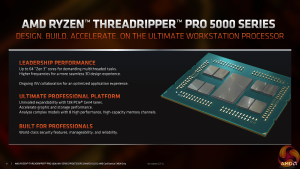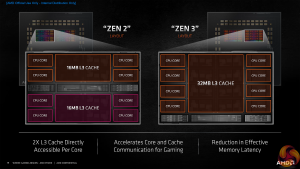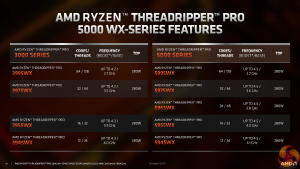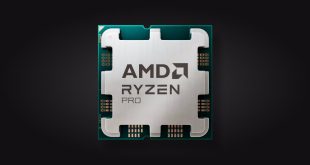We wrote an introduction article about AMD’s Threadripper Pro 5000 WX-series processors back when AMD announced them in March 2022. They were first deployed in Lenovo’s Thinkstation P620 workstation, as we saw with previous Threadripper Pro. But subsequently, they have been released for purchase through the usual retail channels.
Fundamentally, AMD maintains the consistent formula with this Zen 3 iteration of Threadripper Pro. Zen 3 chiplets deploying 32MB of L3 cache and up to eight cores are deployed alongside a central IO die.
For the flagship 5995WX, that is eight core chiplets that give the processor its 64-cores and 256MB of L3 cache. However, the 32-core 5975WX and 24-core 5965WX use four Zen 3-based chiplets to give their relevant core counts alongside 128MB of L3 cache.
Of course, total cache on the chips is just as reported. But one of the key improvements for the Zen 3 CCX versus Zen 2 was a unified 32MB of L3 cache surrounded by eight cores. That means that the Zen 3 cores get better local access to double the amount of L3 cache, as compared with Zen 2 and its 4-core, 16MB L3 CCXs. There should be less inter-CCX latency for certain cache-sensitive workloads.
As we expect from Zen 3, TSMC’s 7nm FinFET process node is used for core chiplets.
AMD rates each Threadripper Pro with a beefy 280W TDP. That translates into maximum boost clocks of 4.5GHz on even the flagship 64-core model. Though sustained all-core loaded clocks will obviously be lower, depending on the Precision Boost 2 algorithms dynamic preferences.
Technically, there is also overclocking capability on these processors, if you really want to push the boat out. Realistically though, this is a bit nuanced.
Firstly, you have to find a motherboard that supports overclocking through the BIOS. WRX80 motherboards are already very rare, and the popular ASUS SAGE model that we have does not support overclocking in its UEFI whatsoever.
Secondly, you have to convince yourself that overclocking and introducing potential instability is a sensible decision for your money-making workstation. Of course, that depends on several factors and personal/company policy. But I can wholeheartedly see why Precision Boost Overdrive, with its low risk, reasonable reward approach could be useful.
Alas, as we said, overclocking is not an option for us as the ASUS test board that we have been supplied with does not support it.
 KitGuru KitGuru.net – Tech News | Hardware News | Hardware Reviews | IOS | Mobile | Gaming | Graphics Cards
KitGuru KitGuru.net – Tech News | Hardware News | Hardware Reviews | IOS | Mobile | Gaming | Graphics Cards





